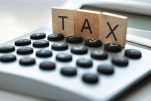After several election cycles opening their wallets, Californians used the March 3 ballot to express skepticism of new tax and bond measures.
Perhaps the biggest surprise was the apparent defeat of Proposition 13, the statewide school bond measure. Not all ballots have been counted, but as of the latest report, the measure is losing by 8 percentage points—more than 600,000 votes. A statewide school bond measure hasn’t failed in 26 years.
Theories
Many reasons have been suggested for this failure—the sheer size of the bond ($15 billion), that it was not supported by the Los Angeles school board, opposition by taxpayer groups, contemporaneous stock market volatility in the wake of coronavirus, or an older electorate less conducive to investing in schools.
Many politicos are pointing to the measure’s ballot designation—Proposition 13. True, the legendary Proposition 13 (age 42) is still massively popular. But the only reason voters may have been confused and concerned that a vote for version 2020 would threaten their property taxes would be that proponents for a split-roll property tax have been beating the drums over the need to “reform” the venerable measure.
Placed on the ballot by the Legislature, the bond measure was supported by a wide range of civic, business and political leaders. The campaign was led by the Governor, supported financially by builders, businesses, and education unions, and raised $12 million to press the case for the bond measure.
But based on evidence from hundreds of local ballot measures, the best explanation for the defeat of Proposition 13 version 2020 is that voters have become more skeptical of the necessity or effectiveness of tax increases and bond issues.
Local Tax Measures
According to an analysis by the California Taxpayers Association (and again based on incomplete election returns), more than half of 237 local tax measures were rejected by voters in the March 3 primary election.
CalTax found that 122 local tax measures were failing, pending a final count of votes. Some of these measures required approval by two-thirds of voters; others needed support by 55%, and some a simple majority.
CalTax calculated that the 59 measures approved by voters amounted to nearly $424 million a year in new taxes and $3.6 billion in new bonds.
Pre-election indicators of the public attitude toward taxes included warning flags. In its “California’s Political Geography 2020,” released in February and based on its regular statewide voter surveys, the Public Policy Institute of California (PPIC) concluded, “Most Californians from coast to interior feel their taxes are too high.” The 2018 and 2019 PPIC surveys found a strong majority of state residents saying they pay too much in taxes.
Results from the primary election should be a wake-up call for state and local elected leaders, that measures seeking new spending and taxes will face a higher bar with voters, who will demand better evidence of need and priority setting, and better assurances that the new money or new taxes will be spent effectively.


